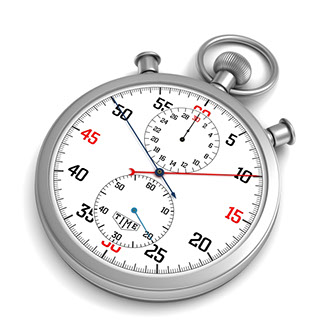SciGen Teacher Dashboard
Unit U3
The Power of Per
Side Effects of Texting
Ratio, Rate, and Percentage
Find Your Natural Walking Pace
Breathing Rate and Heart Rate Correlations
Free Throw Strategy Study
 This unit builds on students’ understanding of measurement and introduces the concepts of rate and ratio. Students learn how to calculate ratios and rates during a series of lab activities and conclude the unit with a writing prompt.
This unit builds on students’ understanding of measurement and introduces the concepts of rate and ratio. Students learn how to calculate ratios and rates during a series of lab activities and conclude the unit with a writing prompt.
Activities
 Scene: Side Effects of Texting
Scene: Side Effects of Texting
Aymara, Giselle, and Reggie discuss the merits about a study that found a correlation between students who text frequently and students who make careless errors while taking tests. They begin a discussion about texting speed and hold a texting contest.
Duration: Approximately 50 minutes
 Lesson: Ratio, Rate, and Percentage
Lesson: Ratio, Rate, and Percentage
Students distinguish ratio from rate with multiple examples. Students explore the relationship between rates and ratio and percentage. The mini-lesson shows the two ways that we can express a ratio as a comparison of amounts or a comparison with a whole. The lesson also introduces the idea of a unit rate, and it ends with students converting two rates to unit rates.
Duration: Approximately 25 minutes
 Lab: Find Your Natural Walking Pace
Lab: Find Your Natural Walking Pace
Students determine their rate of speed while walking at a natural pace (not a race). They collect data in a table, conducting multiple trials and controlling the variables, and then calculate an average and share their findings.
Duration: Approximately 40 minutes
 Lab: Breathing Rate and Heart Rate Correlations
Lab: Breathing Rate and Heart Rate Correlations
Students examine the correlation of heart rate and breathing rate by collecting data under two different conditions: during rest and after exercising. Students record data at a low- and a high-intensity level of jumping rope. Students convert to unit rates. Students plot data on a graph.
Duration: Approximately 60 minutes
 Writing: Free Throw Strategy Study
Writing: Free Throw Strategy Study
Students design an experiment to determine a basketball player's accuracy, and whether she would have a greater success rate shooting more frequently or taking more time to prepare for a shot.
Duration: Approximately 30 minutes
Teacher Tune-ups
- What are rates? And how do they differ from ratios?
- What is a baseline measurement and why is it important in science?
- What are good ways to graph changes over time? Changes based on conditions?
Student View of Visuals and Activities
Some teachers prefer to have students view the slides and other visual assets in this unit directly instead of projecting them in class. Below is a web page to share with students with links to some of same items that are within in the teacher lesson plans, but without the explanatory text for the teacher.
Original SciGen Unit
This unit has been adapted from "7.3 The Power of Per" in the Word Generation program led by Catherine Snow (Harvard University) through a SERP collaboration with the Boston Public Schools and other districts in Massachusetts and Maryland.
PDFs of that earlier unit's teacher and student editions are available at the Science Generation Download Center.
Unit U3 Focus Words
per
preposition – for each
How many hours of TV do you watch per week?
speed
noun – the rate at which something moves
Which is faster: the speed of light or the speed of sound?
rate
noun – a comparison of two different units to give information
Distance traveled compared to time tells the rate of speed. Do you know what mph stands for? Hint: The speed limit of many highways is 65 mph.
ratio
noun – a comparison of two amounts
What is the ratio of boys to girls in your classroom?
frequency
noun – the number of times that something happens within a particular period
What is the frequency at which you send text messages?
accuracy
noun – correctness in every detail
In which sports is accuracy crucial?
precision
noun – the state of being very exact
Why is precision important when conducting a scientific investigation?
pace
noun – the speed or rate at which something is done
At what pace can you run continuously for 30 minutes?
correlate
verb – to have a relationship where two or more things happen or change together
Why do you think obesity correlates with increased risk of a heart attack?
BETA Version - Please send comments and corrections to info@serpinstitute.org